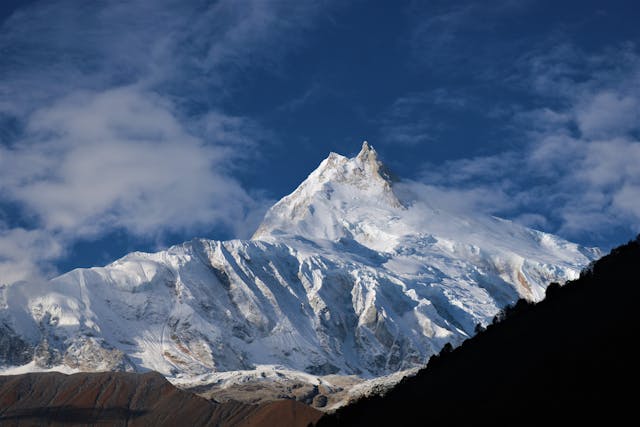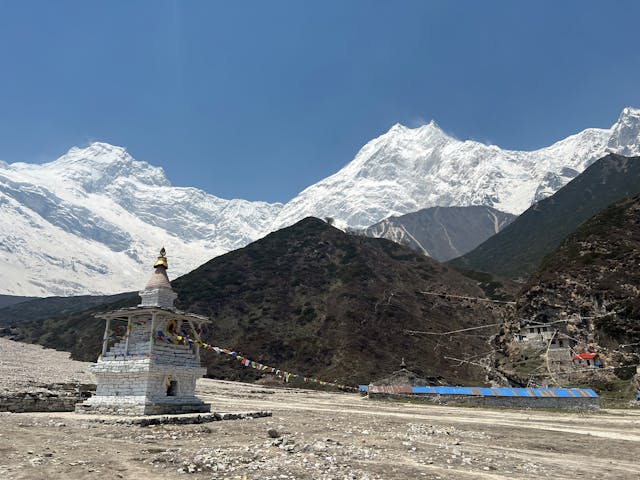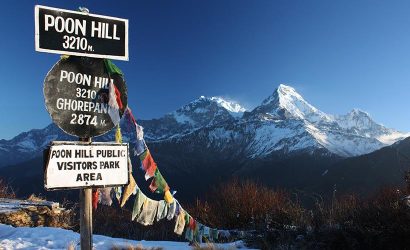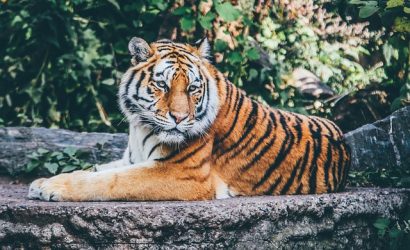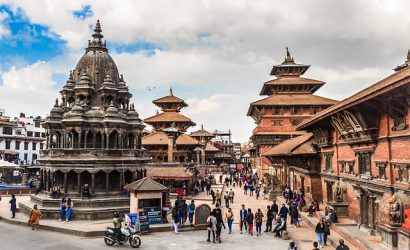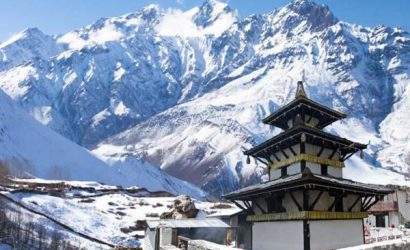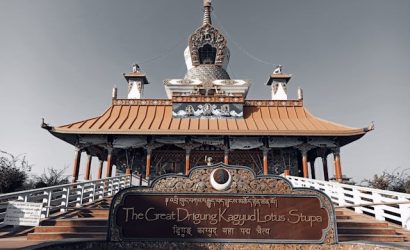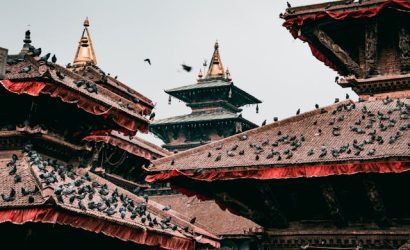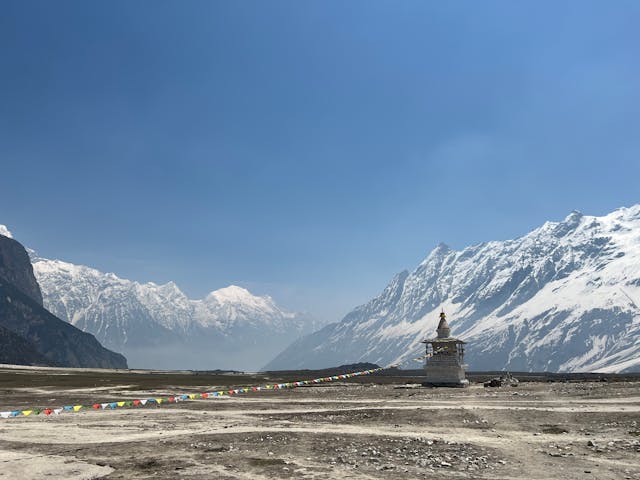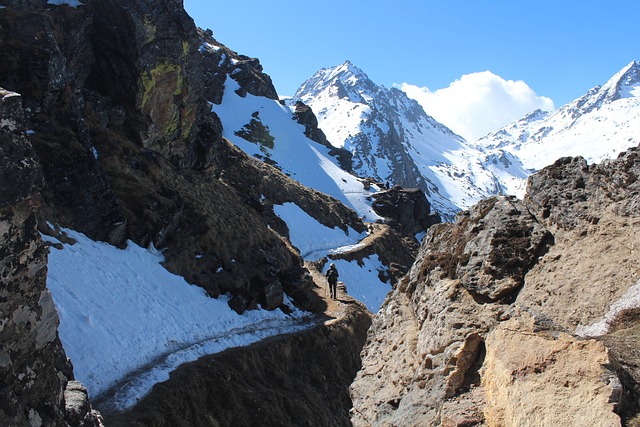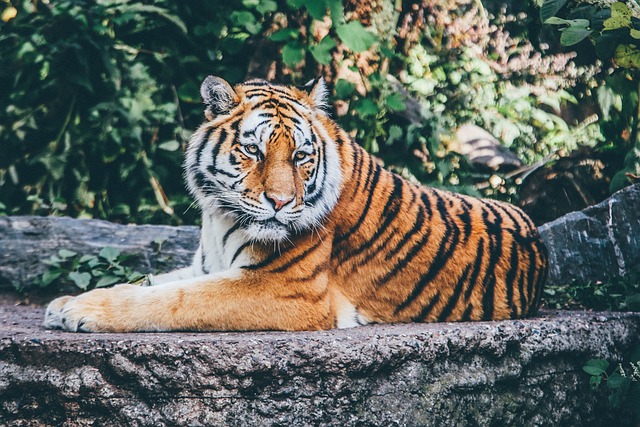The Manaslu Circuit Trek is a remote and revered route in Nepal, offering stunning mountain views, rich highland culture, and thrilling adventure, starting from Arughat and reaching the base of Manaslu (8163m). Opened in 1992, this trek includes the dramatic Larkya La Pass (5,106m) and reflects deep Buddhist traditions and harmony with nature. It can also be combined with the spiritual Tsum Valley trek for a comprehensive experience.
Trip Info
-
Manaslu
-
5106m/16752ft
-
B|L|D on Trek, |B| in Kathmandu
-
Teahouse & Hotel
-
Private Vehicle
Overview
The Manaslu Circuit Trek is a hidden gem in Nepal, highly cherished by seasoned trekkers. It begins from Arughat in Gorkha and takes you to the base of Manaslu (8163m), the world’s eighth highest peak. This trek offers stunning mountain vistas, rich highland culture, and exhilarating adventure. Since it opened to trekkers in 1992, many parts of this region remain untouched and unexplored.
Manaslu, near the Tibetan border, is known as “The Spirit-Mountain” by locals who deeply respect nature, reflecting Buddhist values that prohibit animal killing. The trail is dotted with monuments and artworks that echo Buddhist teachings.
The trek’s highest point, Larkya La Pass (5,106m), is one of the most dramatic passes in the Himalayas. This trek requires good physical fitness and our carefully planned itinerary ensures proper acclimatization and memorable walks on the mountain trails. For those seeking a spiritual journey, the Tsum Valley trek, which can be combined with the Manaslu Circuit, offers significant cultural and spiritual experiences.
Trip Highlights
- The spectacular geographical diversity of the Manaslu region
- Witness the world’s eighth highest Mt. Manaslu (8,163m) and other spectacular peaks
- Crossing the Larkya La pass (5,106m), one of the challenging passes in the Himalayas of Nepal
- Authentic cultural experience in the isolated mountainous villages of Samagaon, Lhogaon, Samdo, and others, inhabited by Tibetan descendants
- Floral and faunal diversity
Itinerary
Our representative receives you at the Tribhuvan International Airport upon your arrival and transfers you to your hotel. Later, we meet to orient you regarding the plans for the following days.
Kathmandu is the historical and cultural heart of Nepal. It has been a popular destination for tourists ever since Nepal opened its doors to its visitors. Markedly, the city presents a wonderful mix of almost all the cultures of Nepal and a fair share of Western influences in the valley. Our guided tour comprises memorable heritage sites such as the biggest Hindu shrine of Pashupatinath, the largest Buddhist stupa in Nepal – Boudhanath, the exemplary Kathmandu Durbar Square, and the famous Monkey Temple in Swayambhunath. After the day sightseeing tour, we drive back to the hotel to pack our equipment and gear for the trek. With the remaining spare time, you may explore the Thamel Market and nearby shops for last-minute shopping for trekking supplies.
The drive from Kathmandu to Machha Khola starts along the Prithivi Highway and branches off to Dhading Besi. Following this, another few hours of drive to Arughat crosses through beautiful mid-hill regions with the view of Ganesh Himal over the horizon. Finally, we drive further to Machha Khola where we overnight.
The Manaslu Circuit Trek begins today alongside the Budhigandaki River, through Khorlabesi, and warm spring at Tatopani. We cross the river and continue along the eastern banks to eventually cross an impressive 195m cantilever bridge drilled into the cliff at Yarubagar. Much to our delight, beautifully cascading waterfalls show up before we stop for lunch at Dobhan. After Yaruphant, we switch to the western banks of Budhigandaki and trek for about half an hour to enter the Manaslu Conservation Area at Jagat. Overnight at Jagat.
The trek resumes along the slate-paved trail that drops down to a suspension bridge followed by a gradual climb past Salleri and Sirdibas. Onward, fascinating Buddhist monuments mark the trail. Walking almost two hours beyond Philim, along the western banks, the trail to Tsum Valley veers to our right. We proceed straight ahead to cross the metal bridge over Budhigandaki and trek west of the river. Further ahead, a forested trail and uphill climb brings us to Nubri Valley where the symbols of Tibetan Buddhism get more extensive. We walk a bit further to arrive at Deng and overnight.
The trail continues parallel to the river along the northeastern bank. Later, we arrive at Ghap, a traditional Buddhist hamlet with myriads of Mani stones and Chortens. Beyond Ghap, we cross the wooden bridge over the Budhigandaki River and make the final climb along the low mountainous rhododendron forest to Namrung, a beautiful highland village with abundant traces of Buddhism. Overnight at Namrung.
The trek resumes after breakfast along the trail that enters the inner Himalayan range. We cross the glacial Hinang River at Lamagaon as we head towards Lho. Throughout the trail, the views of peaks including Mt. Manaslu, Gorkha Himal, Dwijen Himal, Saula Himal, and Lajing Peak among others entice us. As the trek gains elevation, the landscape now begins to be dominated by scant alpine vegetation. A short trek today ends as we approach mani walls, Chortens, prayer flags, and monasteries – signalling our entry into the highland village of Lho where we overnight. The Ribung Gompa looks spectacular with Mt. Manaslu behind it.
The treks for the coming few days are shorter to help in the acclimatization and prevent altitude sickness. The trek today beings through a stone gate with a series of colorful mani walls with a striking view of Peak 29 (Ngadi Chuli) right ahead of us. We trek up to Punggen Glacier from where we can savor the close-up view of majestic Manaslu. Finally, we chase the trail along the lateral moraine of Punggen Glacier to reach Sama Gaon to stop for the night.
We have trekked for more than a week. So, to acclimatize well before heading towards a higher elevation at Larkya La Pass (5106m) we take a day to rest and explore Sama Gaon. The day hike takes you to Manaslu Base Camp, a viewpoint of Manaslu, Larke, and Naike Peak, Punggen, and Manaslu glaciers among others. Additionally, we walk to Birendra Lake which is spectacularly crystal blue during summer and glistening ice during winter.
We have a comfortable day ahead of us making a gradual climb to Samdo along the deserted trail of the windy valley. The Tibetan border lies 4 kilometers north. Samdo is a small settlement in the proximity of Tibet and hence we can observe plenty of Tibetan traces at Samdo. Besides, the mesmerizing views of Mt. Manaslu, Samdo (Pang Chuli), Ngadi Chuli, Simnang Himal, Manaslu glacier, Manaslu Icefall, and several other majestic peaks greet us.
The ascent of the Manaslu Circuit trek continues as we get one camp closer to Larkya (Larke) La Pass. We walk further leaving behind the Budhigandaki River and walk through the trails that take us up the acclivity of high hills. The day ends at Larkya La Phedi.
Summiting the highest point of our entire trek- Larkya La pass highlights the day. We start with a short hike up to Larkya Glacier. The area around the glacier offers a beautiful vista of the Cho Danda and Larkya Peak. Up ahead, the pass gets steeper until we reach the summit at 5,106m. However, our efforts are rewarded with a breathtaking Himalayan vista. The mountain peaks such as Cheo Himal, Annapurna II, Kangguru Himal, and Himlung Himal can be seen. Undoubtedly, we capture the splendid views from Larkya La Pass in our hearts and then descend to Taubuche. Eventually, we reach Bimthang and spend the night at a tea house.
After breakfast, we descend further down through forests of rhododendron, bamboo, and pine. We continue through settlements like Sangure Kharka, Khareche and Gho until we stop for the night at Tilje.
The final day of the Manaslu Circuit trek begins with crossing the bridge over Dudh Khola as we exit out of Tilje and arrive at Tonje. We can witness the striking view of Mt. Manaslu from Tonje. The trek continues via Dharapani and Karte to arrive at Tal village located at the foot of a cascading waterfall. Overnight at Tal.
We drive to Kathmandu in a private vehicle, along the serpentine roads through beautiful villages and busy towns. On your arrival at Kathmandu, you are transferred to your hotel. In the evening, we enjoy a farewell dinner together in one of the finest restaurants in Kathmandu.
This is your last day in Nepal. You may indulge yourself in some souvenir shopping or relax until your departure to the airport. Whenever you’re ready, an airport drop-off is arranged for your final departure flight. Hope to see you again!
Cost
Cost Includes
- Airport pick-up and drop
- 3 nights accommodation in Kathmandu (Breakfast Included)
- 12 nights accommodation at the mountain lodges during the trek (Breakfast, Lunch and Dinner Included)
- Kathmandu to Machha Khola jeep drop off (Day 03) and Tal to Kathmandu jeep pick-up (Day 15)
- Accompany of Licensed, English-speaking, well experienced trekking guide with salary, insurance and personal expenses covered
- One porter for every two clients (13 Kg luggage per person) - salary, insurance and personal expenses covered
- Attached bathrooms and hot showers wherever available
- Trekking permit, TIMS, Manaslu restricted area permit, MCAP and ACAP Permit for the trek and relevant paperwork
- First-Aid box with medicines (Carried and handled by the guide)
- Private AC vehicle during the sightseeing tour
- Accompany of Licensed, English-speaking, well experienced city tour guide with salary and personal expenses covered during the sightseeing tour
- All applicable government charges
Cost Excludes
- Nepal Visa and International airfare
- Travel Insurance (Compulsory) - must cover helicopter evacuation, medical expenses, and Trip Cancellation charges
- Meals in Kathmandu except for breakfast and farewell dinner
- Personal equipment and other personal expenses such as beverages, confectionaries, laundries, etc.
- Monument Entrance fees during the sightseeing tour
- Extra meals, extra porterage service, Wi-Fi, charging of your electronic devices, etc.
- Tips to your guide, porters, driver and other field staff as a token of appreciation
- Any other expenses or charges not mentioned in the 'Trip Includes' list
FAQs
Choosing the Manaslu Circuit Trek with Magical Nepal Treks ensures an unparalleled trekking experience, guided by seasoned professionals with deep local knowledge. Our meticulously crafted itineraries prioritize acclimatization and safety, while offering enriching cultural encounters and breathtaking vistas. We emphasize personalized service, ensuring all logistical details are handled seamlessly, allowing you to immerse fully in the adventure and natural beauty of the Manaslu region.
The prime challenges trekkers face in the trekking regions are language barriers and navigation. A major section of the trekking regions is uninhabited and in the remaining sections that are, the locals hardly understand English or other foreign languages. Weather conditions and other unanticipated challenges can make it difficult to plan the day’s trek, meals and shelter options. A wrong turn could push you off the trail into harm’s way.
A guide on the other hand eases things for you, enriches your experience and ensures safety. Guidance that comes from experience and deep local knowledge lets you enjoy and make the most out of your trip while you leave the arrangements and planning to your guide who becomes an important part of your team.
There is no specific age limit. Trekkers as young as 6 and as old as 75 have trekked in the Himalayas. However, trekkers under the age of 18 are required to be accompanied by a guardian. Younger trekkers should only be brought along if they can be appropriately cared for and can properly communicate any problems to their guardians.
The Manaslu Circuit trek is challenging and may be difficult for some, based on the terrain, time of the year and current weather conditions. It also depends on previous trekking experience, recent exposure to high altitudes, and the skill of the trekker.
Although you may trek the destinations in lower altitudes throughout the year, Spring (February to May) and Autumn (October to December) are the best times to trek in high altitudes. Nepal receives monsoon rain from June through September, which is not a great time to trek. Winter is very cold in the upper mountains with heavy snowfall which cause obstructions in the trekking routes.
Entrance permits for the Manaslu and Annapurna Conservation Areas are required. Additionally, a Manaslu restricted area permit is also required. Upon confirmation of your booking, we acquire all necessary permits on your behalf.
The average trekking hours is around six hours. It can range from four to eight hours a day depending upon trail conditions, day of the itinerary, and weather conditions.
All treks with an exception of a camping trek include accommodation in a mountain lodge or guest house for overnight stays and meals. The rooms are on a twin-sharing basis. The facilities in lower altitudes also offer an attached bathroom with a hot shower.
Teahouse trekking is a popular trekking option wherein trekkers stay at cosy local tea houses in the mountainous regions on a full-board basis. This trekking style is preferred by most trekkers who do not want to carry the additional burden of the tent, food supplies and other daily necessities
Camping trek involves spending the night in designated outdoor campsites at the end of each trekking day. The team caters to all your meals and you sleep in tents. We have a team of professional cooks and support staff in addition to guides and porters.
The nationwide expansion of mobile networks has made it possible to enjoy 4G and 3G networks in most parts of the trek up to moderate altitude. A sim card for NCell and NTC, the leading mobile telecommunications providers can easily be availed. Uninterrupted connection however is greatly affected by weather conditions and terrain. More high-altitude remote areas like the Everest base camp require satellite phones.
A good level of overall fitness, sound health and stamina is necessary to go on and enjoy the trek. If you have any chronic or acute health condition, we recommend that you consult your physician before signing up for the trip.
It is a known fact that oxygen levels at higher altitudes are significantly lower than the level that we are used to and the body needs to adjust to this change in atmosphere. The best way to aid acclimation is to climb slowly. We have prepared our itinerary to allow enough time for acclimation and not put too much strain on the body. Adequate acclimation days, a combination of rest and a short hike has been arranged to further support the process. Minor symptoms of altitude sickness include severe, persistent headache, coughing, pressure in the chest, shortness of breath even while at rest, dizziness, tiredness, loss of appetite and others. It is vital you constantly monitor your health condition and report any signs of sickness to your team leader.
If you fall sick or get injured despite precautions, our first-aid trained guides would be your first help. Depending upon the nature of the sickness or injury, you would either be immediately taken to a lower altitude (in case of altitude sickness) or evacuated by a rescue helicopter for medical attention. We would require your insurance details to arrange for a rescue helicopter if you are injured in a remote area and in no condition to trek further.
The safety of all our guests is our utmost priority. Nepal has been well-known as a safe destination and the Nepalese as friendly and welcoming people. We generally trek in small groups in the constant care and company of our experienced and expert guides. The places that we frequently utilize as our stops have been known to be reliable and safe over the years that we have been served. As such the safety of all travelers is ensured.
Your insurance is mandatory and should cover emergency air ambulance and/or helicopter rescue services and all related medical expenses for injury, death, loss of baggage, theft and trip cancellation. Please ensure that all activities and destinations in the itinerary are included in your policy, specifically mountaineering or alpinism.

